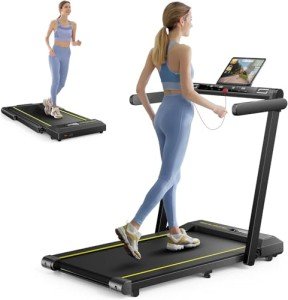The Allure of Treadmills Without Electricity: A Comprehensive Guide
In a world increasingly dominated by high-tech fitness gizmos, the simpleness and usefulness of a treadmill that does not need electricity might look like a throwback. However, click over here now without electricity-- frequently described as "manual treadmills"-- have acquired significant popularity among physical fitness lovers looking for a more uncomplicated, environment-friendly workout choice. This article explores the myriad benefits, features, and considerations surrounding manual treadmills, in addition to answering typical concerns from potential buyers.
What is a Manual Treadmill?
A manual treadmill is a piece of exercise equipment that enables users to walk or run without requiring electrical power. Rather than motorized treadmills that move the belt for you, manual treadmills depend on the user's own effort to move the belt forward. Here's a quick comparison in between manual and motorized treadmills:
| Feature | Manual Treadmill | Motorized Treadmill |
|---|---|---|
| Power Source | None | Electricity required |
| Operative Mechanism | User-powered | Motor-driven |
| Cost | Typically less expensive | Normally more pricey |
| Mobility | Highly portable | Often much heavier, less portable |
| Upkeep | Low | Requires more maintenance |
| Workout Intensity | Higher (more effort) | Can be adjusted |
Advantages of Using a Manual Treadmill
Economical:
- Manual treadmills are usually much more affordable than their electrical equivalents. With a lower initial financial investment and no ongoing electricity costs, these treadmills can be an excellent choice for budget-conscious individuals.
Eco-Friendly:
- As there are no motors or electrical components included, manual treadmills are a sustainable option. They don't take in fossil fuels and leave a smaller carbon footprint.
Versatile Workout:
- Because they require the user to create their own momentum, manual treadmills can offer more extreme workouts, ideal for those wanting to increase their endurance and strength.
Portability:
- Manual treadmills are often lighter and much easier to transfer. They allow users to quickly save them away or move them from one place to another.
Decreased Risk of Injury:
- By enabling a more natural running movement, manual treadmills can assist decrease the risk of injury compared to motorized options. Users have control over their speed and can stop or decrease immediately.
Secret Features to Consider
When thinking about a manual treadmill, particular features must be considered:
- Belt Quality: Look for a non-slip, durable surface that uses enough grip for security throughout workouts.
- Incline Levels: Many manual treadmills come with adjustable incline features. Higher inclines can increase workout strength.
- Measurements: Space can be a restriction, so taking a look at the treadmill's footprint is essential.
- Weight Capacity: Always check the manufacturer's weight recommendations to make sure safety and longevity.
- Display Monitor: Some manual treadmills include fundamental screens for tracking elapsed time, range, and calories burned.
| Function | Description |
|---|---|
| Belt Quality | Non-slip and long lasting materials for safety |
| Incline Levels | Adjustable settings for increased exercise difficulty |
| Dimensions | Size and weight for ease of storage and transportation |
| Weight Capacity | Make sure the treadmill accommodates the user's weight easily |
| Show Monitor | Optional efficiency tracking features |
Selecting the Right Manual Treadmill
Provided the range of manual treadmills available on the marketplace, choosing the ideal one involves assessing individual fitness objectives and requirements. Here's a simplified list to direct customers:
- Assess your physical fitness objectives: Are you intending for weight reduction, endurance, or basic physical fitness?
- Consider the readily available area: Ensure the treadmill will fit well in your designated workout location.
- Look for functions: Look for adjustable incline settings or included technology such as a distance tracker.
- Research brands and reviews: Read about the experiences of other users to determine the dependability and resilience of the model you're considering.
- Set a budget plan: Compare different designs while keeping your budget plan in mind.
Often Asked Questions (FAQ)
1. Are manual treadmills appropriate for all physical fitness levels?
Yes, manual treadmills deal with numerous fitness levels. Newbies can start at a slower rate, while advanced users can increase intensity and speed.
2. How do manual treadmills affect calorie burn as compared to motorized ones?
Manual treadmills might cause greater calorie burn throughout workouts, as users must apply more effort to move the belt.
3. Do I require to put together a manual treadmill?
Most manual treadmills come partially put together, but you'll likely require to finish some assembly depending on the design.
4. Can I perform interval training on a manual treadmill?
Absolutely! Manual treadmills are outstanding for interval training given that users can easily change their rate and start/stopping motions.
5. How do I maintain a manual treadmill?
Upkeep is easy: regular cleaning of the belt and frame, inspecting for wear and tear, and ensuring empty storage when not in use.
Manual treadmills provide various benefits, making them an appealing alternative for many physical fitness lovers. Their energy-efficient design, combined with the capability to supply reliable workouts, has actually sealed their location in home fitness regimens. With a clear understanding of their functions and advantages, people can make an educated decision about whether a manual treadmill is the ideal choice for their health journey.
The uncomplicated appeal of manual treadmills-- paired with their cost-effectiveness and sustainability-- guarantees they stay appropriate in today's physical fitness market, offering a compelling option to electric models.

